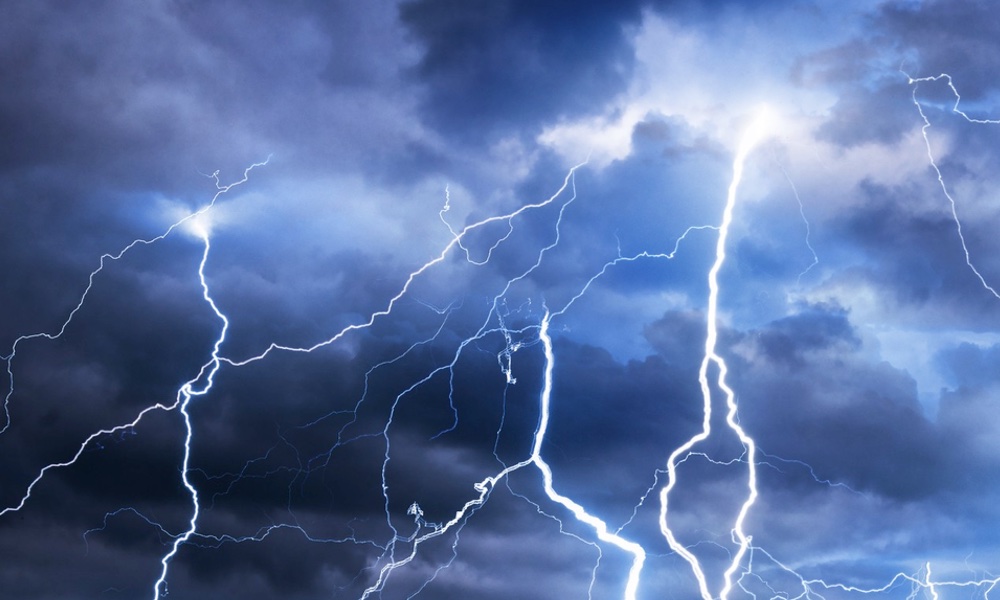When it comes to lightning, be grateful you don’t live in Lake Maracaibo, Venezuela, an area with the most lightning hits anywhere on earth. During thunderstorms in Maracaibo, there are an average of 28 lightning strikes per minute, for up to 10 hours at a time.
No matter where you live, you’re not safe in a thunderstorm. Lightning is a giant discharge of electricity accompanied by a brilliant flash of light and a crack of thunder. The electrical spark discharged by lightning can carry a hundred million volts and extend over five miles. It can raise air temperature by up to 50,000 degrees Fahrenheit.
A direct hit is usually lethal, but since indirect strikes are more common, only about 10 percent of people struck by lightning die. Even those not killed instantly may still die from cardiac arrest because lightning short-circuits the heart's electrical rhythms. Less direct strikes can result in loss of consciousness, broken bones, muscle pains, confusion, hearing loss, seizures, burns, behavioral changes and cataracts.
Because lightning is such a dangerous weather event, it's important to know the situations that put you most at risk for being struck by lightning and what to do to avoid them.Stay away from concrete floors or walls. Lightning can travel through the metal wires or bars in concrete walls and flooring.
It’s true that the odds of being hit by lightning in any year are pretty low — they're estimated at less than one in a million. But if you’re outdoors when a thunderstorm is brewing, the odds are much higher. People who work outdoors or frequently enjoy outdoor recreation are far more likely to be struck.
The same is true for those who live in areas like Maracaibo that see more lightning strikes, and the season can raise the risk, too. The odds of being struck by lightning are higher during seasons — think summer — that have more thunderstorms. With that in mind, it’s not too surprising that the “lightning capital” of the U.S. is Florida with more than 2,000 injuries over the last 50 years. Rising temperatures worldwide may mean the risk of being struck by lightning increases as well.
What can you do to protect yourself from lightning’s potential danger? These are the CDC’s tips for staying safe in a thunderstorm:
- If the weather forecast calls for thunderstorms, postpone all outdoor plans.
- Keep this slogan in mind: When thunder roars, go indoors. If you’re not near a building, seek safety in a hard topped vehicle with the windows rolled up.
- Remember the 30-30 rule. After you see lightning, start counting to 30. If you hear thunder before you reach that number, go indoors. Suspend outdoor activities for at least 30 minutes after the last clap of thunder.
If you’re caught outdoors, and there’s no place you can seek shelter:
- Head for lower ground; immediately leave elevated areas such as hills, mountain ridges or peaks.
- Never lie flat on the ground. Crouch down in a ball-like position with your head tucked and hands over your ears so that you’re down low but with minimal contact with the ground.
- Don’t shelter under an isolated tree.
- Get out of any body of water and away from it.
- Stay clear of objects that conduct electricity — such as barbed wire fences and power lines.
- Stay away from concrete floors or walls. Lightning can travel through the metal wires or bars in concrete walls and flooring.
- Because lightning can travel through plumbing, don’t use water to bathe or wash dishes during a thunderstorm.
- Don’t use electronic equipment during a storm. Lightning also travels through electrical systems, radio and television systems, even corded landline phones.





